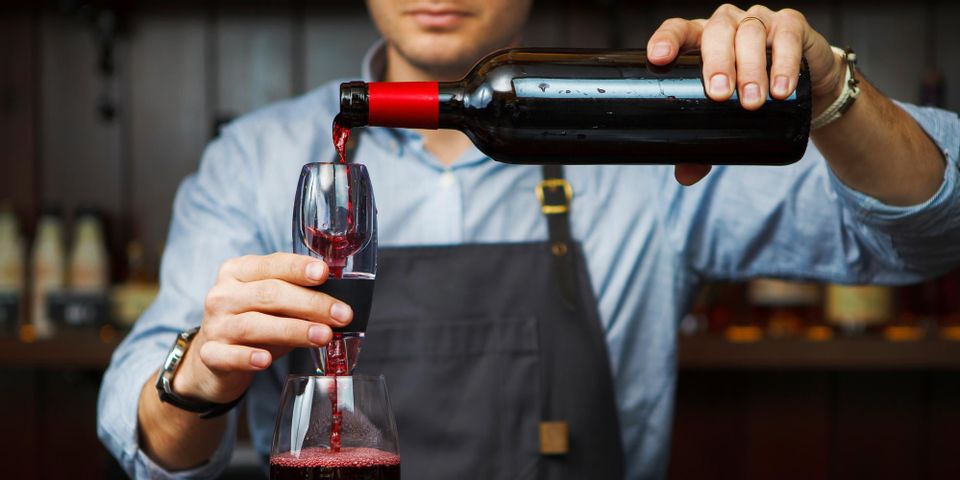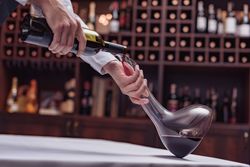
Whether you’re having a glass of wine with a meal at a restaurant or attending a wine tasting, you’ll likely notice the server or sommelier pouring the bottle through a decanter or aerator. These devices invite air into the wine, helping it develop and become smoother to drink. Although both accessories accomplish the same task, there are slight differences between them. Use this guide to learn more about what decanters and aerators do and when to use them.
Decanter
Decanters are wide, tall, glass serving containers, and you’ll often see them at wine tastings and restaurants. They’re designed to provide ample surface area for the wine to mingle with the air. This method of air circulation is also known as letting the wine breathe. The process tames the drink’s bitter tannins and helps the bouquet develop, making it easier to identify its unique characteristics.
 Sediment will also settle to the bottom of the glass, resulting in a clear, fully-developed wine. Decanters work slowly, and wine can last for several hours in these containers without spoiling.
Sediment will also settle to the bottom of the glass, resulting in a clear, fully-developed wine. Decanters work slowly, and wine can last for several hours in these containers without spoiling.
Aerator
Aerators are small devices that you place on the bottle or hold in your hand. These products allow air bubbles to infiltrate the wine as the liquid passes through them. Although the objective is the same as when you decant a bottle, the process is faster.
The convenience and heightened speed make aerating ideal for casual settings. Aerators are best for young varieties 10 years or younger. The fast oxygenation may be too harsh for vintages over this age, causing their flavors to fade.
If you’re looking for a high-quality bottle of wine to decant or aerate, turn to Oeno Winemaking in Kailua, HI. This winery offers a wide selection of reds and whites from around the world, including local blends made on Oahu. If you want to sample a bottle before buying it, sign up for one of their wine tastings or enroll in their club. To get more information about how to enroll, visit the website or call (808) 263-6366.
About the Business
Have a question? Ask the experts!
Send your question

